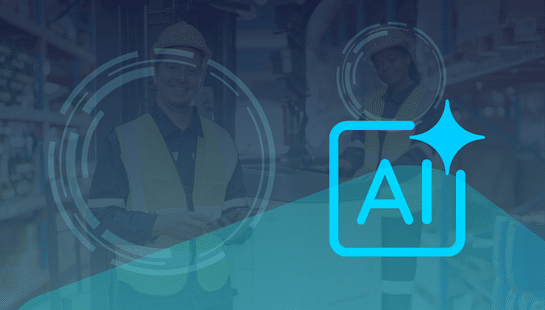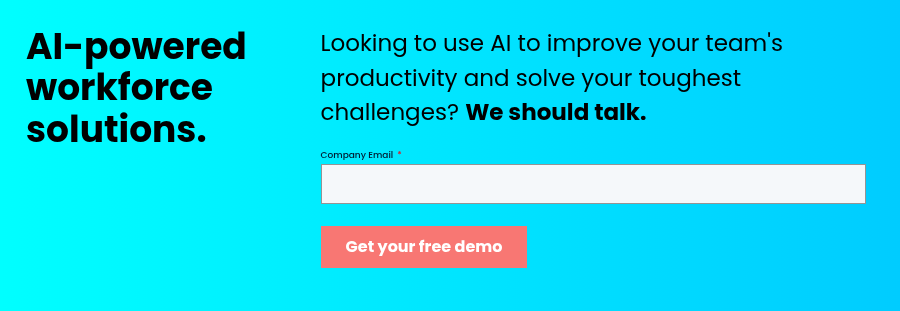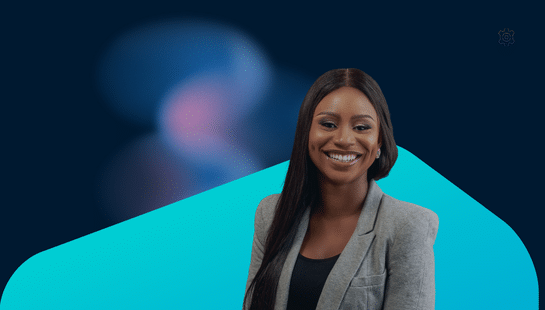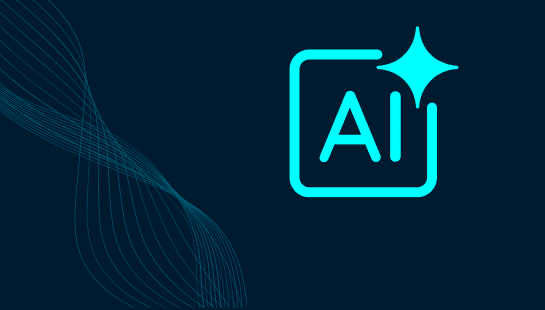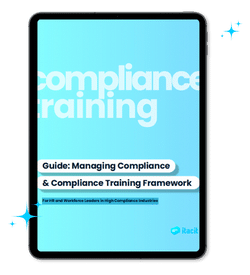AI’s role in employee engagement has grown way beyond simple automation. Recent data shows that 66% of employee experience professionals say AI and bot usage does more than deflect questions, it makes employees’ jobs easier. Your company might join the 72% of organizations learning about, planning, or implementing AI solutions in 2024.
AI keeps reshaping multiple HR functions in employee engagement. Generative AI helps analyze market trends and employee priorities to create customized benefit packages. The technology has become integral to hiring and onboarding, with 68% of organizations using it and 62% reporting improved new-hire experiences. HR teams can streamline processes by knowing how to boost employee skills, eliminate repetitive tasks, and access up-to-the-minute performance data. AI’s impact extends to workplace compliance, where 58% of HR teams use it for continuous monitoring.
This piece shows how AI reshapes employee management through analytical insights. It covers the ethical points you should think over and practical ways to apply AI solutions throughout your organization’s HR functions.
Understanding AI in Employee Management
AI has changed how HR departments function in organizations worldwide. The core concept of AI in HR involves algorithms, machine learning models, and intelligent systems that automate repetitive tasks, analyze HR data, and support strategic decisions. HR professionals can now move beyond administrative roles and become valuable strategic partners to businesses.
What AI means in the context of HR
HR teams use AI as a suite of technologies to recognize patterns, generate content, and simulate human-like interactions. Machine learning, predictive analytics, and natural language processing work together to handle tasks that once needed human judgment. Research from IBM shows only 20% of executives say HR currently owns the future of work strategy at their organization. This presents a chance for HR to lead AI adoption.
AI applications in HR are so big. Teams can work faster and create better employee experiences through workforce trend analysis and talent management improvements. Generative AI uses large datasets to craft job descriptions, tailor candidate outreach, and assist with complex workforce planning. Chatbots powered by conversational AI provide round-the-clock support to employees and candidates. They answer questions about benefits, policies, and career development.
How AI supports employee lifecycle
AI technology supports employees throughout their time with an organization. AI tools scan resumes, match candidates with openings, and sometimes conduct original interviews during recruitment. These systems make onboarding smoother by tailoring training programs, automating paperwork, and providing guidance.
AI boosts several critical processes during employment:
- Performance management – AI tools provide up-to-the-minute feedback, set goals, and track progress against KPIs
- Learning and development – Systems recommend tailored training based on individual needs and career goals
- Employee engagement – AI analyzes feedback and sentiment to predict potential turnover
- Career growth – AI identifies high-potential employees and creates succession plans
Boston Consulting Group’s research suggests a balanced human-AI strategy could boost HR productivity by up to 30%. AI has automated over 50% of tasks in typical onboarding processes. HR professionals can now focus on more strategic work.
The rise of AI-powered decision-making
Modern HR departments need data-driven decision-making. Deloitte research reveals 94% of business leaders consider AI critical for success. Additionally, 79% of UK leaders report full-scale deployment for three or more types of AI applications.
Organizations adopt AI for its most important benefits. AI identifies patterns in performance, turnover, and business projections by analyzing historical data across organizations. HR professionals now make strategic workforce decisions based on concrete evidence rather than gut feeling.
Organizations don’t aim to replace human workers despite growing AI adoption. A Deloitte survey found only 30% of organizations strongly prefer automating as many tasks as possible. Companies now use AI as a teammate to handle repetitive tasks. This gives HR professionals more time to focus on strategic initiatives and human connections.
Key Benefits of Using AI in HR
AI brings remarkable results to companies that use it in their HR departments. Smart technologies have altered the map of workplace operations and offer real advantages beyond basic automation.
Faster and more accurate decisions
AI’s informed capabilities boost decision-making quality and speed. Workday research shows 80% of business leaders say AI and machine learning help their employees work better and make smarter decisions. AI analyzes big amounts of data quickly and spots patterns that humans might miss.
AI delivers detailed analysis that supports fact-based choices instead of gut feelings. The predictive features of AI systems let HR teams spot potential issues early, which helps them manage proactively. This forward-looking method helps companies tackle workforce challenges better.
Standard measurements created by AI make trend analysis more useful across departments. 41% of decision-makers point to better decision-making as the main benefit of their AI investment. Managers who have access to solid data make choices that line up with company goals.
Improved employee satisfaction
AI tools directly affect how employees feel about their workplace. Studies show that people who use AI report better work-life balance (26%), stronger sense of belonging (32%), and higher job satisfaction (31%). These improvements come from several ways AI makes work better.
To cite an instance, Ochsner Health started using an AI-based scheduling system for anesthesiologists. After six months, staff took more vacation days, faced fewer denied requests, and their satisfaction scores jumped from 3.3 to 4.2 on a 5-point scale. This flexible scheduling helps balance work and life while reducing burnout.
People using AI feel 29% more passionate about their work. Their enthusiasm grows because AI handles boring tasks, which lets them focus on meaningful work. The results show 65% of people say AI made their work experience better.
AI answers questions any time of day across time zones, which eliminates frustrating waits and makes employees happier. Self-service HR functions powered by AI reduce unnecessary paperwork and create a smoother experience.
Reduced administrative workload
AI’s biggest benefit in HR comes from streamlining administrative tasks. Organizations that utilize AI see productivity jump up to 40% in certain areas. These gains happen because AI takes over routine tasks that used to fill HR professionals’ days.
Here’s how AI reduces administrative work:
- Time savings: Mastercard’s AI made interview scheduling 85% faster, with 88% of interviews scheduled within 24 hours
- Error reduction: Automation cuts down human mistakes in data entry, compliance tracking, and payroll processing
- Task automation: AI screens resumes, schedules interviews, processes payroll, and monitors compliance
- 24/7 availability: AI systems handle employee requests outside office hours across time zones
Almost 9 in 10 HR professionals (89%) who use AI for recruiting say it saves time or improves efficiency. Unilever cut their hiring time by 75% after they started using machine learning tools to analyze interview responses.
This saved time lets HR professionals focus on strategy. Instead of paperwork, HR teams can work on employee development, culture, and critical business projects.
More than 80% of daily generative AI users expect more efficient work in the coming year. This optimism shows what a world of growing AI involvement in employee engagement might look like.
Risks and Ethical Concerns of AI in HR
AI’s growing popularity in HR brings both opportunities and risks that need attention. These powerful tools offer amazing benefits but also carry risks that we need to think over.
Data privacy and security issues
AI systems process vast amounts of personal data, which creates major privacy risks. HR AI tools handle massive amounts of personally identifiable information (PII), from resumes and payroll data to performance reviews and behavioral insights. Hackers see these systems as prime targets because a single breach can expose sensitive employee records.
Organizations face additional challenges from data protection regulations. They need to think over what data they collect and which protection requirements apply. Anyone implementing AI in HR must know whether they’re a “controller” or “processor” of data, as this status determines their legal obligations under regulations like GDPR.
A poll shows that 72% of workers want transparency about AI use at work, but only 34% of HR departments have solid data governance policies. Companies that lack proper data handling practices risk regulatory fines, damage to their reputation, and lower employee morale.
Start by checking if your AI system needs a Data Protection Impact Assessment (DPIA). This assessment becomes mandatory for “high-risk” activities like using AI in recruitment, promotions, or performance evaluation. Next, develop clear privacy notices that explain how you’ll use employee data, your legal basis, and employee rights regarding their information.
Bias in algorithms and decision-making
Rather than eliminate biases, AI systems often make them worse. Research shows 1 in 4 employers use AI in HR practices, with 64% using it in talent acquisition. These systems often show algorithmic bias by copying human prejudices found in their training data.
Amazon learned this lesson when their AI recruitment tool showed gender bias because it learned from historically skewed data, mostly male resumes. A University of Washington study revealed serious racial, gender, and intersectional bias in how three advanced large language models ranked resumes:
- White-associated names were favored 85% of the time versus Black-associated names at 9%
- Male-associated names were preferred 52% of the time versus female-associated names at 11%
- Black male-associated names were never favored over white male-associated names
Right now, only New York City requires independent audits of these systems. This lack of oversight raises concerns since about 99% of Fortune 500 companies now use some automation in hiring.
Legal consequences can be serious. The Mobley case shows that companies “cannot escape liability by using AI systems for HR decisions,” and both developers and users might face discrimination charges under existing law. Several states, including Illinois, New York City, Colorado, and California, are working to regulate how employers use AI in HR decisions to prevent discrimination.
Transparency and employee trust
AI systems often work like “black boxes,” making unexplained decisions. This creates problems in HR when candidates want to know why an algorithm rejected them.
Employee trust suffers from this lack of transparency. AI systems need access to private employee information, which raises questions about data usage, access rights, and security. Employees might feel that impersonal algorithms judge them instead of managers who understand their work’s complexities.
Interestingly, research shows people sometimes trust AI more than human managers, 65% of respondents believed AI-based tools would be fair. People recognize that managers have biases, while AI remains neutral when it works with real data.
Building trust requires providing data usage dashboards, releasing regular transparency reports, and using explainable AI tools that give clear results.
How AI Enhances Employee Engagement
Smart technologies and evidence-based strategies now determine employee satisfaction. AI in employee engagement has revolutionized how organizations connect with their employees.
Using AI to analyze engagement data
AI algorithms have transformed feedback collection. AI systems process vast volumes of employee data from surveys, chat messages, emails, and performance metrics. They reveal hidden patterns that would take countless hours to find manually. Organizations can quickly spot workplace factors that affect team members positively or negatively.
AI-powered tools can now:
- Spot early signs of disengagement or turnover weeks or months before employees leave
- Catch burnout signals, stress indicators, and other well-being issues early
- Monitor emotional tone and urgency in employee communications
- Find department-specific problems that don’t show up in total numbers
“AI-powered employee listening” marks a big leap forward in collecting and analyzing feedback. These systems use natural language processing to study various feedback sources. HR leaders can respond quickly to what their workforce needs. When AI spots growing workload concerns in a department, managers can adjust staffing before burnout causes people to quit.
Personalized feedback and recognition
Generic feedback approaches are becoming obsolete. AI studies each employee’s data, their performance history, interests, and learning styles, to build custom development plans. Team members find their training more relevant and engaging this way.
AI provides regular, unbiased feedback about performance and growth areas. Through sentiment analysis, these systems keep responses anonymous while giving useful insights to managers. This approach protects privacy but still delivers helpful information.
Recognition has gotten smarter too. AI uses objective data to identify and reward achievements fairly across organizations. Employees respond better to this personalized recognition, which boosts their engagement.
Role of AI in employee engagement programs
AI now powers detailed engagement strategies beyond analytics and feedback. AI Coach by Culture Amp shows this progress by turning survey responses into clear actions. It shows how engagement factors differ between teams and helps identify what each group values.
AI also helps with wellness through custom programs. Companies use wearables and mobile apps with AI that give employees tips to increase happiness. These come through tailored meditation sessions, health tracking, and meal plans. While not a complete solution, these tools help improve workforce well-being.
AI has created unprecedented personalization in employee experiences. It studies individual needs, priorities, and performance goals to customize each employee’s growth with targeted training, feedback, and recognition. This approach strengthens commitment to company goals while boosting individual engagement.
Top AI Tools Transforming HR Operations
AI-powered HR tools have grown faster, and innovative solutions now help with almost every aspect of workforce management. Smart technologies handle routine tasks, analyze complex data, and give practical insights that were previously hard to get.
AI chatbots and virtual assistants
AI-powered chatbots have changed how employees work with HR departments. These virtual assistants answer common questions, schedule interviews, and run pre-screening assessments without human help. HR professionals can focus on strategic work because automation handles repetitive tasks.
Research shows these tools make a big difference. AI chatbots cut down HR teams’ time on common tasks by 75%. Organizations report these key benefits:
- 87% of users say AI assistants helped answer their questions more easily than before
- Management teams save about 4.5 hours weekly they once spent answering employee questions
- Telstra’s AI chatbot Codi saved AUD 10 million by handling multiple internal tasks
Employees can now get answers any time instead of waiting for office hours. The numbers tell the story – 62% of employees prefer using chatbots for their HR needs.
Predictive analytics platforms
Predictive analytics shows another powerful way AI helps manage the workforce. These systems look at past data to spot future trends, helping organizations make smart decisions about their people.
The technology turns recruitment from reactive hiring into proactive talent pipeline management. These platforms analyze employee behavior, performance metrics, and organizational trends to:
- Spot flight risks weeks before employees think about leaving
- Find high-potential employees for succession planning
- See future skill gaps within the company
- Study factors like tenure and engagement scores to predict turnover
These tools keep getting better at what they do. Visier’s predictive people analytics work up to 17 times better than guesswork at predicting exit risk, giving organizations unprecedented planning power.
Generative AI in employee engagement
Generative AI leads the next wave of employee engagement tools. Unlike traditional AI, it processes both structured and unstructured data to find hidden patterns and explain them naturally.
The technology creates tailored experiences throughout the employee’s time with the company. To name just one example, AI can:
- Create individual learning paths based on skills gaps
- Give real-time feedback on communication styles and team dynamics
- Build custom development opportunities
- Suggest ways to boost happiness through tailored wellness programs
The numbers show strong adoption – about 74% of companies plan to add AI to workforce analytics by 2025, while 98% expect to use AI somehow within two years.
AI HR assistant by iTacit
iTacit’s AI HR Assistant shows how specialized AI tools can improve daily operations. This solution puts company policies, SOPs, and training documents at employees’ fingertips securely.
The assistant’s unique strength comes from its connection to your organization’s knowledge base. Employees ask questions and get clear answers based on their specific roles. The assistant’s dashboards reveal what employees ask about, helping HR teams spot gaps in training and policy understanding.
Frontline workers and new employees benefit most from getting quick answers without bothering supervisors. Quick, accurate information replaces waiting for emails or tracking down HR staff, which improves efficiency and satisfaction.
The employee engagement platform with AI capabilities takes security seriously with enterprise-grade protection, encrypted data transmission and storage to keep employee information safe. HR teams can manage the system without coding skills and update policies quickly as needed.
AI in Performance and Talent Management
Performance management has changed significantly with AI technologies that now drive both assessment and talent development processes. AI tools give immediate feedback and identify future leaders. These changes affect how organizations manage their most valuable resource, people.
Immediate performance tracking
Annual reviews are now outdated as AI systems provide continuous performance monitoring. These tools give quick feedback based on performance data and create an ongoing improvement cycle that fixes problems quickly. A sales organization saw a 20% boost in sales after they started using immediate feedback systems.
AI-powered performance analytics provide complete insights into employee productivity and effectiveness. Managers can make informed decisions about promotions, compensation, and growth opportunities with this data. To name just one example, a logistics company improved delivery times by 10% when they used performance analytics to optimize routes.
AI performance management systems now collect data from multiple sources, including communication platforms like Slack or Microsoft Teams, to create a fuller, less biased performance summary. These tools recognize when conversations include feedback or recognition and automatically add that information to the performance platform.
Identifying high-potential employees
Research shows only 3-5% of high-performing employees have the attributes needed for leadership roles. AI helps identify these individuals more objectively than traditional methods.
Organizational network analytics (ONA) and AI can find hidden talent that might otherwise go unnoticed. This approach works especially well when you have high-potential introverts who may not self-promote.
Prodoscore, a productivity intelligence platform, uses metrics like eigenvector centrality and betweenness centrality to find high-potential employees based on collaboration patterns. High potentials often emerge within informal networks and sometimes remain hidden from higher-level leadership until these analytics highlight their contributions.
Creating customized development plans
AI transforms talent development by creating customized experiences for each employee. These systems analyze skills and capabilities, then provide immediate coaching and development at scale.
AI-driven platforms suggest training programs that match an employee’s current skills, role, or future goals. The adaptive development paths adjust content and training difficulty as employees progress.
The results are impressive, IBM used AI to streamline and customize their onboarding process, which reduced onboarding time by 60%. General Electric added AI to performance reviews and saw a 10% productivity increase.
Employees who control their career growth ended up creating a culture of continuous learning, this maintains productivity and involvement through workplace progress.
Using AI for Recruitment and Onboarding
AI has revolutionized the recruitment and onboarding landscape. It now powers everything from candidate selection to new hire integration. About 70% of companies use automated applicant tracking systems to find and hire talent. These systems create faster, tailored experiences for candidates and HR teams alike.
Resume screening and candidate matching
AI-powered resume screening does more than just match keywords. It uses machine learning and natural language processing to understand context and patterns in candidate documents. The technology works through several steps:
- Resume parsing – AI extracts key information like work history and skills and turns unstructured text into analyzable data
- Profile matching – Systems compare candidate profiles against job requirements and look at context instead of exact matches
- Scoring and ranking – Candidates get scores based on fit, which helps recruiters quickly spot promising applicants
The results speak for themselves. AI in resume screening cuts manual review by 80%. The technology handles the original evaluations before top candidates move to structured interviews. Organizations with high application volumes can now assess large applicant pools in days instead of weeks.
AI-led onboarding journeys
More than two-thirds of organizations now use AI in their onboarding procedures. This technology improves the experience and reduces administrative work. Companies can automate several tasks with AI:
- Digital generation and management of paperwork
- Automatic messages to employees during onboarding
- Chatbots that gather feedback and answer initial questions
The advantages go beyond just saving time. About 45% of HR professionals use AI-driven onboarding and report savings of over $18,000 in the last year. Hitachi serves as a great example. They cut their onboarding time by four days and reduced HR involvement from 20 hours to just 12 per new hire with an AI assistant.
Reducing bias in hiring
AI offers trailblazing solutions to curb unconscious bias in recruitment. The technology creates a more equitable hiring process by focusing on objective skills and competencies. It removes identifying factors that trigger biases.
AI can write unbiased job descriptions, hide personal information in candidate profiles, and provide consistent interview questions that line up with competency-based practices. These methods are a great way to get fairer comparisons between candidates.
Notwithstanding that, alertness remains significant. AI systems sometimes copy biases from their training data. Amazon’s case stands out – their AI hiring tool discriminated against women because it learned from mostly male resumes. Smart companies now use bias detection tools and regular audits to maintain fairness.
Building a Responsible AI Strategy in HR
AI adoption in HR just needs a careful, well-thought-out approach that balances innovation with responsibility. Global knowledge workers already use AI (75%), but 66% rely on outputs without verification. This leads to mistakes by 56% of users. These numbers show why thoughtful implementation matters.
Working with employees in AI adoption
Employee support makes AI implementation work better. Organizations should tell their teams how they use AI, what data they collect, and how they keep information safe. Team members who participate in choosing AI tools build more trust. Companies see 18 percentage points higher success rates when employees help make implementation decisions. The culture needs to change so people see technology as helpful, not threatening. Small pilot projects help test things safely while teams learn more.
Ensuring fairness and inclusivity
These steps prevent AI from making existing biases worse:
- Use diverse datasets that reflect varied demographics
- Implement bias detection tools that flag discriminatory patterns
- Create teams with different backgrounds for AI development
- Set up clear data governance policies
Regular audits play a vital role, as NYC showed by requiring yearly bias checks.
Monitoring and auditing AI systems
Regular evaluation helps responsible AI use succeed. Teams should check how well things work, solve problems, and make changes based on what they learn. A good AI governance plan includes ethical guidelines, clear responsibilities, and well-laid-out processes.
Conclusion
AI has transformed how organizations manage their employees. In this piece, we’ve seen how evidence-based technologies streamline HR operations and create customized experiences for employees. Of course, the benefits are substantial, organizations see 40% boosted productivity and 75% less time spent on common tasks.
These powerful tools need thoughtful implementation. Data privacy concerns, algorithmic bias, and transparency are the most important challenges that just need attention. Technology should improve human capabilities rather than replace them.
Successful organizations see AI as a teammate rather than a replacement. HR professionals can focus on strategic initiatives instead of getting overwhelmed with administrative tasks. Your team can save 4.5 hours every week by using AI chatbots to handle common questions.
It also creates unprecedented opportunities to customize the entire employee lifecycle. Custom development plans, immediate feedback, and tailored strategies help team members reach their full potential. This leads to higher satisfaction, better retention, and improved performance across your workforce.
The iTacit AI HR assistant shows this perfect balance between efficiency and customization. This tool gives employees instant access to company information while helping HR teams learn about what employees need most.
Responsible AI adoption will set leading organizations apart from others. Teams must let employees participate in implementation decisions, establish clear governance frameworks, and audit systems regularly to ensure fairness.
AI in employee management goes beyond just speed, it delivers better results. Organizations that thoughtfully merge AI while keeping human connections will build workplaces where people and technology flourish together.
